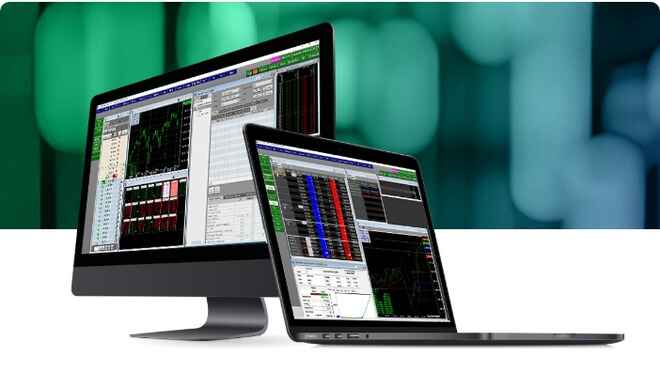| Course Sections: |
| Part 1: Introduction to Futures Trading |
| Part 2: Futures Trading 101 |
| Part 3: Who Trades Futures? |
| Part 4: Why Trade Futures? |
| Part 5: Basic Futures Trading Strategies |
Let’s get right to it. Why should you even be interested in futures trading? What’s in it for you?
Leverage
This is the big one for most traders. In futures trading, the capital you devote to holding a position is substantially less than what you need to hold an equities position—even on margin.
A non-margined equities account requires you put up 100% of the value of the security. Even a margin account requires an initial deposit of at least 50% of the stock’s current value. In contrast, you typically are required to put up just 5%-20% of a contract’s value to hold a futures position.
Your gain or loss, however, is still calculated as if you had deposited 100% of the value of the contract.
Leverage is what gives futures trading its reputation for being risky. Although it can make your money work harder and deliver more profits when you are on the right side of the market, leverage is equally effective at magnifying your losses if the market is going against your position.
There is no doubt that leverage is a two-edged sword. Experienced futures traders will tell you that using stops, taking small losses and being vigilant about your risk-management practices will help you stay on the right side of the leverage beast.
Ask your senior market strategist about current minimum margin requirements for the markets you are interested in trading. Be aware that margin requirements can change at any time, and are particularly likely to do so when the markets are volatile. Also, you can always commit more capital to margin than the minimum requirements in order to reach a comfortable level of leverage for you.
Example of Leverage: At $6 per bu., a 5,000-bu. corn futures contract is worth $30,000. If the price of corn rises by 10% to $6.60, the contract is then worth $33,000—a gain of $3,000 for someone who is long futures at $6. If the margin requirement for one corn futures contract is $2,000, then a 10% price increase (and gain of $3,000 in contract value) means a futures trader made a 150% return on the capital required to hold the position.
Tax Advantages
Given their short-term nature, futures trading profits get a preferential 60/40 long-term/short-term capital gains tax treatment. This means that 60% of gains are considered long-term and are taxed up to 15%, while the remaining 40% of gains are considered short-term gains and are taxed up to 35% (regardless of the time the contract is held). Please discuss how this may affect your situation with your tax advisor.
Increased Opportunity
Futures trading appeals to those who embrace opportunity and freedom. For example, futures trading does not discriminate against someone who wants to trade on the short side of the market. The margin and order-entry requirements to sell short are the same as if you want to be long. You don’t have to “borrow” anything to get into a short position, and there’s no uptick rule for selling short.
Second, many futures markets—even U.S. stock indices—are open virtually 24 hours day from Sunday night through Friday afternoon. You’re able to trade when it’s convenient for you—or whenever global news prompts you to take action.
Asset Diversification
Futures allow investors to broaden the range of asset classes held in their portfolios, thereby potentially reducing risk and improving long-term returns. According to a study published by the CME Group, portfolios with as much as 20% of assets in managed futures yielded up to 50% more than a portfolio of stocks and bonds alone.
Futures also allow a “pure play” with the underlying commodity that simply is unavailable with stocks, even those with strong correlation. For example, a mining stock could be considered as having exposure to the gold market. But it is not a “pure play” because other factors exist, e.g., sector influence and corporate management, that affect the value of the security but are not related to the commodity’s price.
Financial Protection
Futures trading has its roots in protecting against the risk of adverse price movement. Indeed, the markets began in the mid-1800s as a way for commodity producers and users to “hedge” against prices going against their best interest. Today, companies worldwide do exactly that, particularly with financial futures contracts that cover stocks, interest rates and currencies.
<Back– Part 3: Who Trades Futures? Next– Part 5: Basic Futures Trading Strategies >

